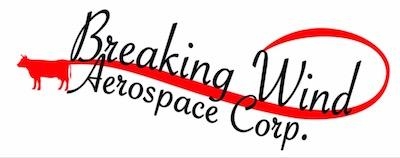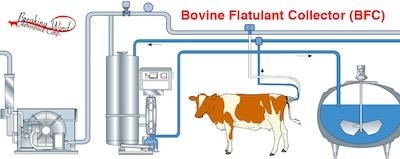Mon, Apr 01, 2019
CH-4 Will Rely On Bovine Flatulence For Fuel
Aero-News April 1 Special Edition
A startup company is working on a proof-of-concept aircraft engine that would use methane derived from bovine flatulence as it primary fuel.

The CH-4 engine is being developed by Breaking Wind Aerospace Corporation. The theory is that methane can be burned as an alternate, renewable energy source in an effort to reduce the amount of greenhouse gasses released into the atmosphere when compared to traditional reciprocating engines.
"We're focusing on the GA and BizAv markets, as there is a lot of research being done on alternative renewable fuels for commercial aviation," said Breaking Wind founder and CEO Shamas Pemberton.
Pemberton says that a modern reciprocating engine will need relatively few modifications to burn methane as a fuel. The major hurdle to be overcome will be generating enough of the gas to make the concept commercially viable. "We're talking with many airports, particularly in rural areas, to convert some of their safety areas into grazing land on which cattle and other livestock can be raised. Twice each day, the cows will be herded into a barn, where a device much like a milking machine will be connected to the appropriate orifice and methane will be collected," he said.

But since the cows might not "produce" on schedule, collectors will also be strategically placed around the pastures to capture and filter the air and extract the methane from the natural processes that occur where such animals are raised. "That gas can then be compressed into fuel cells that can easily be swapped out, probably more quickly than a traditional stop at the fuel pump. Just be hopeful there is not a leak into the cockpit of the airplane ... though the pilot would certainly become aware of such a problem if very short order," Pemberton said.
Pemberton said that they hope to have a working prototype of the CH-4 engine by 2022, with FAA and EASA certification targeted for 2028. "We're just trying to do our part for the Green New Deal," Pemberton said.
More News
Aero Linx: Model Aeronautical Association of Australia MAAA clubs are about fun flying, camaraderie and community. For over 75 years, the MAAA has been Australia’s largest fl>[...]
Touchdown Zone Lighting Two rows of transverse light bars located symmetrically about the runway centerline normally at 100 foot intervals. The basic system extends 3,000 feet alon>[...]
“Discovery and innovation are central to our mission at Virgin Galactic. We’re excited to build on our successful record of facilitating scientific experiments in subor>[...]
How To Get A Story On Aero-TV News/Feature Programming How do I submit a story idea or lead to Aero-TV? If you would like to submit a story idea or lead, please contact Jim Campbel>[...]
Student Pilot Reported That During Rotation, “All Of A Sudden The Back Of The Plane Kicked To The Right..." Analysis: The student pilot reported that during rotation, “>[...]
 ANN's Daily Aero-Linx (05.02.24)
ANN's Daily Aero-Linx (05.02.24) ANN's Daily Aero-Term (05.02.24): Touchdown Zone Lighting
ANN's Daily Aero-Term (05.02.24): Touchdown Zone Lighting Aero-News: Quote of the Day (05.02.24)
Aero-News: Quote of the Day (05.02.24) ANN FAQ: Contributing To Aero-TV
ANN FAQ: Contributing To Aero-TV NTSB Final Report: Cirrus Design Corp SR20
NTSB Final Report: Cirrus Design Corp SR20




